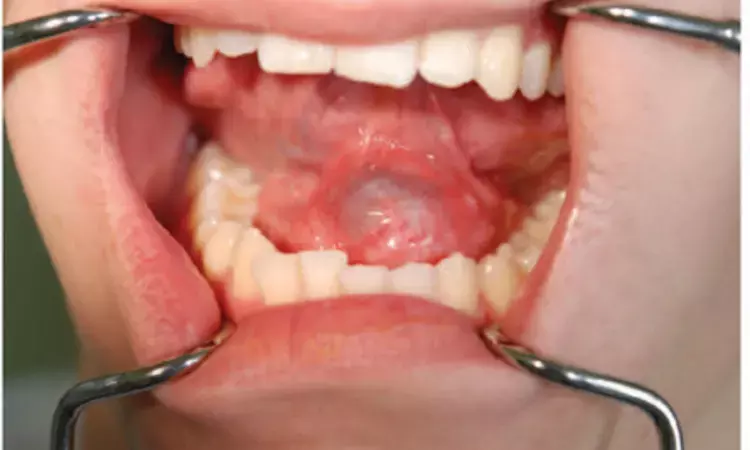- Home
- Medical news & Guidelines
- Anesthesiology
- Cardiology and CTVS
- Critical Care
- Dentistry
- Dermatology
- Diabetes and Endocrinology
- ENT
- Gastroenterology
- Medicine
- Nephrology
- Neurology
- Obstretics-Gynaecology
- Oncology
- Ophthalmology
- Orthopaedics
- Pediatrics-Neonatology
- Psychiatry
- Pulmonology
- Radiology
- Surgery
- Urology
- Laboratory Medicine
- Diet
- Nursing
- Paramedical
- Physiotherapy
- Health news
- Fact Check
- Bone Health Fact Check
- Brain Health Fact Check
- Cancer Related Fact Check
- Child Care Fact Check
- Dental and oral health fact check
- Diabetes and metabolic health fact check
- Diet and Nutrition Fact Check
- Eye and ENT Care Fact Check
- Fitness fact check
- Gut health fact check
- Heart health fact check
- Kidney health fact check
- Medical education fact check
- Men's health fact check
- Respiratory fact check
- Skin and hair care fact check
- Vaccine and Immunization fact check
- Women's health fact check
- AYUSH
- State News
- Andaman and Nicobar Islands
- Andhra Pradesh
- Arunachal Pradesh
- Assam
- Bihar
- Chandigarh
- Chattisgarh
- Dadra and Nagar Haveli
- Daman and Diu
- Delhi
- Goa
- Gujarat
- Haryana
- Himachal Pradesh
- Jammu & Kashmir
- Jharkhand
- Karnataka
- Kerala
- Ladakh
- Lakshadweep
- Madhya Pradesh
- Maharashtra
- Manipur
- Meghalaya
- Mizoram
- Nagaland
- Odisha
- Puducherry
- Punjab
- Rajasthan
- Sikkim
- Tamil Nadu
- Telangana
- Tripura
- Uttar Pradesh
- Uttrakhand
- West Bengal
- Medical Education
- Industry
Ethanol Ablation of Ranulas Shows Promise, but Recurrence Risk Analysis Urged: Study

Korea: Ranulas, those pesky mucous cysts that can form beneath the tongue, have long plagued patients and clinicians alike with their tendency to recur after traditional surgical removal. However, a new study sheds light on a promising alternative treatment: ethanol ablation. While this method shows considerable efficacy, researchers caution that understanding risk factors for recurrence is crucial for optimizing patient outcomes.
The study, published in JAMA Otolaryngology-Head & Neck Surgery, suggests that early ethanol ablation is a treatment option for ranula, however, there is a need for more research to establish the exact role in ranula management.
"In the case-series study of 70 ranula patients, the recurrence rate was 33%, with multivariate analysis showing that the time interval between ranula presentation and ethanol ablation may be a risk factor for recurrence," the researchers reported.
"Most patients experienced their first recurrence within 12 months following ethanol ablation, with a maximum diameter of 5 cm or higher as a possible risk factor; no risk factors were significantly associated with subsequent surgery."
Ethanol ablation (EA) involves the injection of ethanol directly into the ranula cavity, causing dehydration and subsequent cyst shrinkage. Unlike traditional surgery, this minimally invasive technique boasts shorter recovery times and reduced risk of complications. However, few studies have assessed long-term outcomes and recurrence of ranula after EA.
Against the above background, Pae Sun Suh, University of Ulsan College of Medicine, Asan Medical Center, Seoul, Korea, and colleagues aimed to evaluate the long-term outcomes and the risk factors for recurrence and receipt of subsequent surgery in patients who underwent treatment with EA for ranula.
For this purpose, the researchers conducted a case-series study at a single tertiary hospital and assessed patients treated with EA between 2009 and 2021. Among 70 consecutive patients, it excluded those with follow-up loss or who were followed up for less than 24 months.
The primary outcome was recurrence at the last follow-up after single or multiple EA sessions. Secondary outcomes included recurrence-free survival (RFS) rate and receipt of subsequent surgery after initial EA. Factors possibly associated with outcomes included patient sex and age; the presentation-to-EA interval; ranula site, type, diameter, volume, and echogenicity; and sublingual gland herniation.
The study led to the following findings:
- Fifty-seven patients (mean age, 26.4 years; 42% females) were included and were followed up for a median of 57 months.
- The recurrence rate was 33%, and 19% underwent subsequent surgery.
- Among patients with recurrence, 86% experienced first recurrence within 12 months after initial EA.
- A presentation-to-EA interval of 12 months or longer was associated with an increased risk of recurrence (adjusted odds ratio [OR], 3.74).
- No risk factors were significantly associated with subsequent surgery (highest OR in parapharyngeal space extension: adjusted OR, 4.96).
- Among the initial cohort of 70 patients, 2-year RFS was lower in maximum diameter of ranula of 5 cm or higher than less than 5 cm (24% versus 50%; difference, 26%).
In conclusion, the case-series study found that the ranula's recurrence rate after EA was 33%. A presentation-to-EA interval of 12 months or longer may be a risk factor for recurrence, indicating that early intervention with EA might minimize recurrence. Most first recurrences occurred within 12 months following EA, with a maximum diameter of ranula of 5 cm or higher being a possible risk factor.
Reference:
Suh PS, Lee JH, Roh YH, et al. Ethanol Ablation of Ranulas and Risk Factor Analysis for Recurrence. JAMA Otolaryngol Head Neck Surg. Published online May 02, 2024. doi:10.1001/jamaoto.2024.0183
Dr Kamal Kant Kohli-MBBS, DTCD- a chest specialist with more than 30 years of practice and a flair for writing clinical articles, Dr Kamal Kant Kohli joined Medical Dialogues as a Chief Editor of Medical News. Besides writing articles, as an editor, he proofreads and verifies all the medical content published on Medical Dialogues including those coming from journals, studies,medical conferences,guidelines etc. Email: drkohli@medicaldialogues.in. Contact no. 011-43720751


